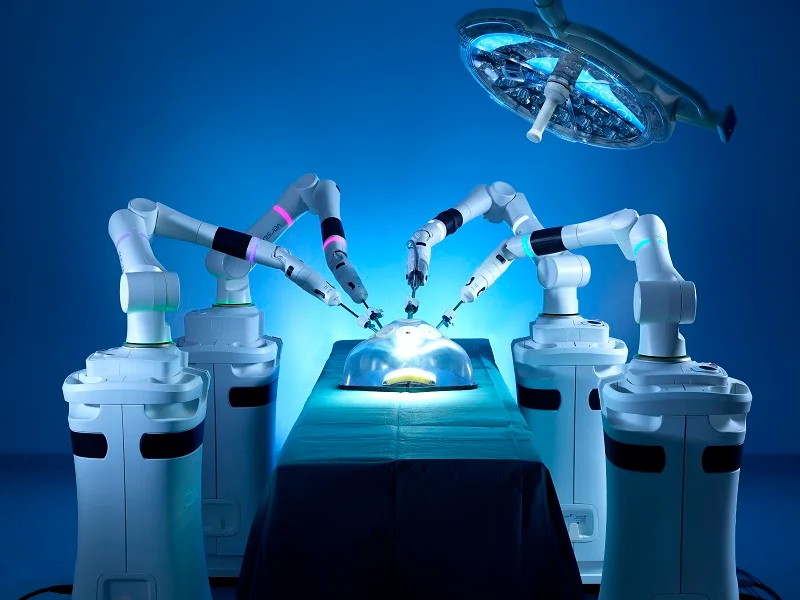How the DaVinci System Revolutionized Surgery

Image Source: https://www.medicaldevice-network.com/features/da-vinci-surgical-robot-competitors/
This past March, the company Intuitive Surgical released the fifth generation version of their groundbreaking invention, the da Vinci robotic system. Despite how it might sound, the da Vinci robot is not a mechanical arm that paints. It’s actually a complex robot system that carries out complex surgical procedures.
The Da Vinci Surgical System, or Da Vinci robot, was first developed by Intuitive and approved by the FDA in 2000, and has continued to become more widespread as its safety and capability improves. This sophisticated robot is designed to carry out minimally invasive surgical procedures with enhanced precision, flexibility, and control. The system is named after Leonardo da Vinci, famous painter, engineer, and scientist of the 15th century, who made numerous contributions to medicine and anatomy, and conceptualized the first ever robotic design in his sketches.
The Da Vinci system consists of three main components. First is the surgeon’s console: the control center where the human surgeon sits and operates the robotic instruments. The second is a patient cart with four robotic arms. The operating surgeon’s hand movements are detected by the robot and translated into ultra-precise, micro-movements of the robotic instruments inside the patient’s body. These arms can copy the dexterity and flexibility of a typical human hand, but can exercise far greater precision. Last is the vision system: the console has a 3D vision system that displays a magnified view of the site being operated on. This enhanced visualization enables surgeons to see the critical parts of a patient’s anatomy with greater clarity than if they operated themselves.
Use of the Da Vinci robot has several advantages over a normal, human-operated surgery. It is much more precise and controlled, since it filters out any possible tremors or missteps that might exist in a human hand. Delicate procedures need accurate, precise, and steady operations, and the robot offers these qualities more than a human ever could. These robotic hands also possess greater dexterity than our hands: they can rotate 360 degrees and bend in ways which are impossible for humans. Additionally, its enhanced visualization system allows for a better view of complex features of the anatomy. Finally, the main purpose of the machine was to make it minimally invasive. The system’s robotic hands use small incisions in flesh instead of the large cuts of an open surgery, resulting in reduced trauma and scarring for the patient.
The system can be useful in a multitude of fields in medicine, including urology, gynecology, and cardiology. One of the earliest and most common applications of it is in prostatectomies - removal of the prostate gland. In these types of procedures, the Da Vinci system’s precision makes it ideal to save important nerve tissue. It is also widely applied in gynecological surgeries such as hysterectomies and myomectomies, making it a better option than cutting large openings in the abdomen. Finally, cardiac surgeons use the machine for procedures within the small chest cavity, like mitral valve repair and coronary artery bypass, which require precision.
Since its introduction 24 years ago, the Da Vinci robot has undoubtedly revolutionized surgery. But there are still drawbacks. The high cost of implementation and maintenance can prevent many hospitals from acquiring it. Additionally, it’s hard for surgeons to initially learn how to use the machine safely; actual proficiency often requires a lot of extra training added on to the already grueling training time of medical school. Intuitive Surgical is frequently adding onto and releasing new versions of its systems to help tackle these problems and expand its capabilities. Da Vinci 5, which was approved by the FDA just three months ago, boasts increased accuracy and precision, next-gen 3D imaging, and the new introduction of force-sensing technology. This new system will doubtlessly make medical procedures more efficient, precise, and safe for patients. Currently, more than 1,700 da Vinci Systems are installed in hospitals worldwide. As these systems get safer, more powerful, and easier to learn, this number will certainly increase.


